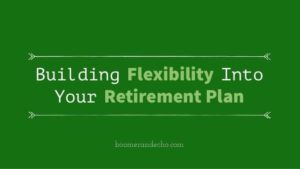We’re always hearing dire warnings about how woefully unprepared boomers are for retirement. An Ipsos-Reid survey done for CGA-Canada reports that 25% of their respondents have never made a savings contribution and 29% said they had no money left over to save after paying expenses.
So, what if you’re now in your 50s, still have a mortgage, and have a measly retirement fund? You held off with your savings for whatever reason and chances are you’re now thinking more about retirement and how you want to spend your time.
Related: A simple way to boost your retirement savings
What do you do now?
If you’ve arrived late to the retirement savings game then you have your work cut out for you. This is a critical time for retirement planning.
For many Canadians, their 50s are the peak earning years and they could still have 10 – 15 years left in the workplace.
Typically there is a decline in spending as many larger financial commitments are hopefully behind you, or are winding down. There should be a big push to optimize this and work to accumulate your nest egg. You’ll have to set aside more of your earnings and consider some cost-cutting options.
For most people, learning to spend less is about breaking bad habits. This may be the last shot you have to impose some meaningful discipline on your finances. Stop throwing away money on stuff you don’t really want or need.
Pay down high interest credit-card debt as soon as possible. Pay off your mortgage. Take the money spent on mortgage payments and providing for your children and whisk it away into your savings. You probably have loads of unused RRSP contribution room, which can generate huge tax returns.
Make the most of new money. Consider putting any bonuses, tax refunds or other lump sum payments directly into savings.
You may have to reduce your style of living. Consider downsizing to a less expensive-to-operate home. Tell grown children still living at home to start fending for themselves.
Basically – spend less.
If you and your spouse can do that for 10 – 15 years while earning average salaries or better, it should provide enough for a typical middle-class retirement.
Where do I start?
Figure out where you stand financially.
Assume you don’t sell your house and you receive $25,000 to $30,000 a year per couple from CPP/OAS and you have no employer pension.
Ask yourself what you want to do and where, because only then can you know how much you will need.






